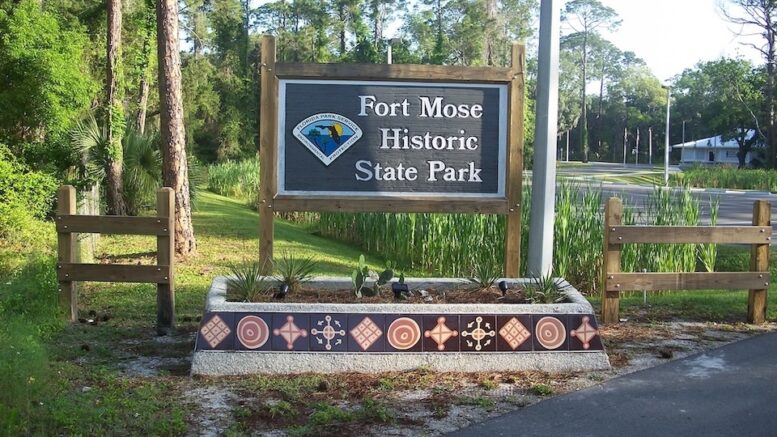By Holly Hearn
Fort Mose State Park is filled with St. Augustine’s history dating back to 1687 when the first free black people from slavery in the Carolinas arrived.
By 1738, the town of Gracia Real de Santa Teresa de Mose had been constructed. It officially became home to what Fort Mose calls “Freedom Seekers” and the first free black community in the present-day United States.
Fort Mose is kept alive today by many volunteers and state park employees who work to preserve the history and beauty of the park.
Thomas Jackson, commonly referred to as TJ, is one of those volunteers and has been involved with the park in many roles since 1994. Jackson heard about Fort Mose for the first time from his history professor while attending Florida A&M University.
“I heard about it again in the late 90s when the Florida Park Service started managing the sight,” he said. “I accepted the responsibility to take the lead in establishing a Citizen Support Organization (CSO) to assist the Parks Service to manage the sight and have been involved ever since.”
Jackson serves on the park’s Board of Directors and is also involved with the Militia Musters, a reenactment held on the first Saturday of each month.
“One of the favorite things about being involved with Fort Mose is reenactment and telling the story, especially to fourth and fifth-graders who are very inquisitive,” Jackson said. “Florida history is taught at that grade level, and they seem to enjoy the story as well as the militia firing the muskets and cannon.”
To live in Fort Mose, people were required to convert to Catholicism, live under Spanish rule, and join their militia; the first line of defense for St. Augustine was an early warning for attacks from the North.
“I think the most important story of Mose is a sanctuary of freedom and an opportunity to live, work and play under a reasonable aura of freedom as opposed to Plantation society,” Jackson said.
Fort Mose was the sight of the first major defeat of the British in the Americas, predating the American Revolution.
In 1740, the Battle of Bloody Mose occurred. The British army took over the area, but 16 days later, a group of Spanish soldiers, Fort Mose militia, and Yamasee warriors fought back and quickly regained the fort. This is reenacted annually and attracts hundreds of visitors to the park to watch.
The original fort was destroyed during this battle. The people of Fort Mose were left to rebuild it at a second location, which took 12 years.
According to the Florida Museum of Natural History at the University of Florida, the original fort had a group of wooden houses surrounded by clay walls and a moat.
Now, archeologists and construction workers of the park are working to build a full-scale replica of the original fort and have been working for 20 years on it. The build is set to be done in the coming months.
Jackson is also helping coordinate Fort Mose’s Flight to Freedom event from Feb. 20-22. During this time, guests are invited to experience Fort Mose as the Freedom Seekers of 1738 had.
Guests follow the “original underground railroad” trail, where the Yamasee tribe guides the Freedom Seekers through forests and swamps. They also experience the culture of the original Fort Mose community.
Jackson has consistently worked over decades to promote the park’s importance in the history of Florida and the United States. Fort Mose played a key role in history, which visitors to the park are reminded of when engaging in the experiences Jackson and others provide.
Jackson said the Spanish were relegated to the back pages of Florida’s history.
“Black history and Native American history and Spanish history are so intertwined in the history of this period it kind of took the backburner,” he said. “You really can’t tell Florida history unless you involve the Native Americans, the Spanish and the black people.”




Be the first to comment on "Volunteer Brings Light to Florida’s Forgotten History at Fort Mose"